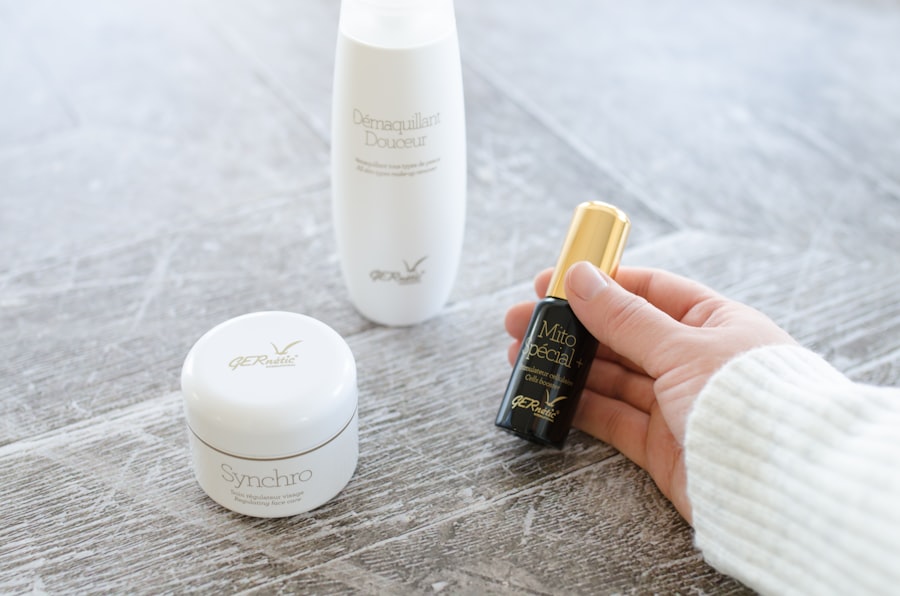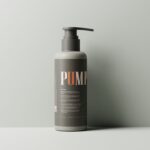After undergoing laser hair removal, it’s essential to grasp what happens to your skin during the recovery phase. The laser targets hair follicles, damaging them to inhibit future hair growth. This process can lead to temporary changes in your skin, including redness, swelling, and sensitivity.
Understanding these effects can help you manage your expectations and prepare for the days following your treatment. You may notice that your skin feels warm or tender, similar to a mild sunburn. This sensation is normal and typically subsides within a few hours to a couple of days.
As you navigate the post-treatment period, it’s crucial to recognize that individual experiences may vary. Factors such as skin type, hair color, and the area treated can influence how your skin reacts. Some people may experience minimal discomfort, while others might have more pronounced reactions.
Being aware of these variations can help you remain calm and patient as your skin heals. Additionally, knowing what to expect can empower you to take proactive steps in caring for your skin, ensuring a smoother recovery process.
Key Takeaways
- Post-laser hair removal process involves potential discomfort, redness, and sun sensitivity
- Managing discomfort and redness can be done with cool compresses and over-the-counter pain relievers
- Protecting the skin from sun exposure is crucial to prevent hyperpigmentation and sunburn
- Moisturizing and hydrating the skin helps to soothe and repair the treated area
- Avoiding harsh chemicals and exfoliants is important to prevent irritation and damage to the skin
Managing Discomfort and Redness After Treatment
Managing discomfort and redness after laser hair removal is a vital aspect of your post-treatment care. While the initial sensations may be unsettling, there are several strategies you can employ to alleviate discomfort. Applying a cool compress to the treated area can provide immediate relief.
The coolness helps reduce inflammation and soothes the skin, making it feel more comfortable. You might also consider over-the-counter pain relief medications, such as ibuprofen or acetaminophen, to help manage any lingering discomfort. In addition to physical remedies, it’s essential to listen to your body and give it time to heal.
Avoiding tight clothing or anything that may rub against the treated area can prevent further irritation. If you find that redness persists beyond a few days or worsens, it’s wise to consult with your practitioner. They can assess your condition and recommend appropriate interventions if necessary.
Remember, while some redness is expected, prolonged or severe reactions should not be ignored.
Protecting the Skin from Sun Exposure

One of the most critical aspects of post-laser hair removal care is protecting your skin from sun exposure. After treatment, your skin is particularly sensitive and vulnerable to UV rays, which can lead to complications such as hyperpigmentation or sunburn. To safeguard your skin, it’s advisable to avoid direct sunlight for at least two weeks following your session.
If you must be outdoors, wearing protective clothing and seeking shade can significantly reduce your risk of sun damage. In addition to physical barriers, applying a broad-spectrum sunscreen with an SPF of 30 or higher is essential. Sunscreen should be applied generously and reapplied every two hours if you’re spending extended periods outside.
This protective measure not only helps prevent sunburn but also aids in maintaining an even skin tone as your skin heals. By prioritizing sun protection, you can enhance the effectiveness of your laser hair removal treatment and promote healthier skin in the long run.
Moisturizing and Hydrating the Skin
| Product | Moisturizing Level | Hydrating Level |
|---|---|---|
| Lotion A | High | Medium |
| Cream B | Medium | High |
| Serum C | High | High |
Keeping your skin moisturized and hydrated after laser hair removal is crucial for optimal recovery. The treatment can leave your skin feeling dry or tight, making it essential to incorporate a gentle moisturizer into your skincare routine. Look for products that are fragrance-free and formulated for sensitive skin to avoid any potential irritation.
In addition to topical moisturizers, staying hydrated from within is equally important. Drinking plenty of water throughout the day supports overall skin health and aids in the healing process.
Hydration helps maintain elasticity and suppleness in your skin, reducing the likelihood of dryness or flakiness after treatment. By combining external moisturizing with internal hydration, you create an environment conducive to healing and rejuvenation.
Avoiding Harsh Chemicals and Exfoliants
After laser hair removal, it’s vital to avoid harsh chemicals and exfoliants that could irritate your sensitive skin. Your skin has just undergone a significant procedure, and introducing aggressive products can lead to adverse reactions such as redness or peeling. For at least a week post-treatment, steer clear of products containing retinoids, alpha hydroxy acids (AHAs), or beta hydroxy acids (BHAs).
These ingredients can be too abrasive for freshly treated skin. Instead, opt for gentle cleansers and soothing serums that promote healing without causing irritation. Look for ingredients like aloe vera or chamomile, known for their calming properties.
This approach not only enhances comfort but also maximizes the benefits of your laser hair removal treatment.
Monitoring for Potential Side Effects

Monitoring for potential side effects after laser hair removal is an essential part of ensuring a smooth recovery process. While most individuals experience only mild side effects such as redness or swelling, it’s crucial to be vigilant for any unusual reactions that may arise. Keep an eye out for signs of infection, such as increased pain, pus formation, or fever.
If you notice any of these symptoms, it’s important to contact your healthcare provider promptly for evaluation. Additionally, some individuals may experience changes in pigmentation following treatment. This could manifest as darkening or lightening of the skin in the treated area.
While these changes are often temporary, they can be concerning if they persist beyond a few weeks. Documenting any changes in your skin’s appearance can help you communicate effectively with your practitioner during follow-up appointments. By staying informed and proactive about potential side effects, you can ensure that any issues are addressed promptly.
Adhering to a Proper Skincare Routine
Establishing a proper skincare routine after laser hair removal is vital for maintaining healthy skin and maximizing the results of your treatment. Start by cleansing your face with a gentle cleanser that won’t strip away moisture or irritate sensitive areas. Follow this with a soothing toner or serum that helps calm inflammation and promotes healing.
Incorporating these steps into your daily routine will create a solid foundation for optimal skincare. As you progress through the healing process, consider gradually reintroducing other products into your routine once your skin has fully recovered. This might include serums with antioxidants or hydrating ingredients that support overall skin health.
However, always prioritize gentleness during this phase; avoid overwhelming your skin with too many new products at once. By adhering to a consistent yet gentle skincare routine, you’ll not only enhance the results of your laser hair removal but also foster long-term skin health.
Following Up with Maintenance Treatments
Following up with maintenance treatments is an integral part of achieving long-lasting results from laser hair removal. While many individuals experience significant hair reduction after their initial sessions, periodic maintenance treatments can help ensure that any remaining hair follicles are effectively targeted. Typically recommended every six months to a year, these follow-up sessions allow you to maintain smooth skin without the hassle of traditional hair removal methods.
In addition to scheduling maintenance treatments, it’s essential to communicate openly with your practitioner about any changes in hair growth patterns or concerns you may have post-treatment. They can provide tailored advice based on your individual needs and help you determine the best course of action moving forward. By committing to regular maintenance and staying engaged with your skincare professional, you’ll be well on your way to enjoying the long-term benefits of laser hair removal while keeping your skin healthy and radiant.
After undergoing laser hair removal for a Brazilian treatment, it is crucial to follow proper aftercare instructions to ensure optimal results. One helpful article on this topic can be found at In Laser Hair Removal’s website. This article provides valuable tips and guidelines for post-treatment care, including avoiding sun exposure, moisturizing the treated area, and avoiding harsh chemicals. By following these recommendations, individuals can maintain smooth and hair-free skin for longer periods.
FAQs
What is laser hair removal aftercare for a Brazilian treatment?
Laser hair removal aftercare for a Brazilian treatment involves following specific guidelines to ensure the best results and minimize any potential side effects. This may include avoiding sun exposure, using gentle skincare products, and avoiding activities that could irritate the treated area.
How long does it take for the skin to heal after a Brazilian laser hair removal treatment?
The skin typically takes about 7-14 days to heal after a Brazilian laser hair removal treatment. During this time, it is important to follow the aftercare instructions provided by the treatment provider to promote proper healing and minimize any discomfort.
What are the common aftercare instructions for Brazilian laser hair removal?
Common aftercare instructions for Brazilian laser hair removal may include avoiding sun exposure, wearing loose clothing, avoiding hot baths or showers, and using gentle skincare products. It is also important to avoid picking or scratching the treated area to prevent irritation and potential scarring.
Can I shave or wax the treated area after Brazilian laser hair removal?
It is recommended to avoid shaving or waxing the treated area after Brazilian laser hair removal, as this can irritate the skin and interfere with the hair removal process. Instead, it is best to allow the treated hair to fall out naturally as the skin heals.
Are there any specific products I should avoid using on the treated area after Brazilian laser hair removal?
It is best to avoid using harsh skincare products, exfoliants, or perfumed lotions on the treated area after Brazilian laser hair removal. These products can irritate the skin and interfere with the healing process. It is best to use gentle, non-irritating skincare products recommended by the treatment provider.





